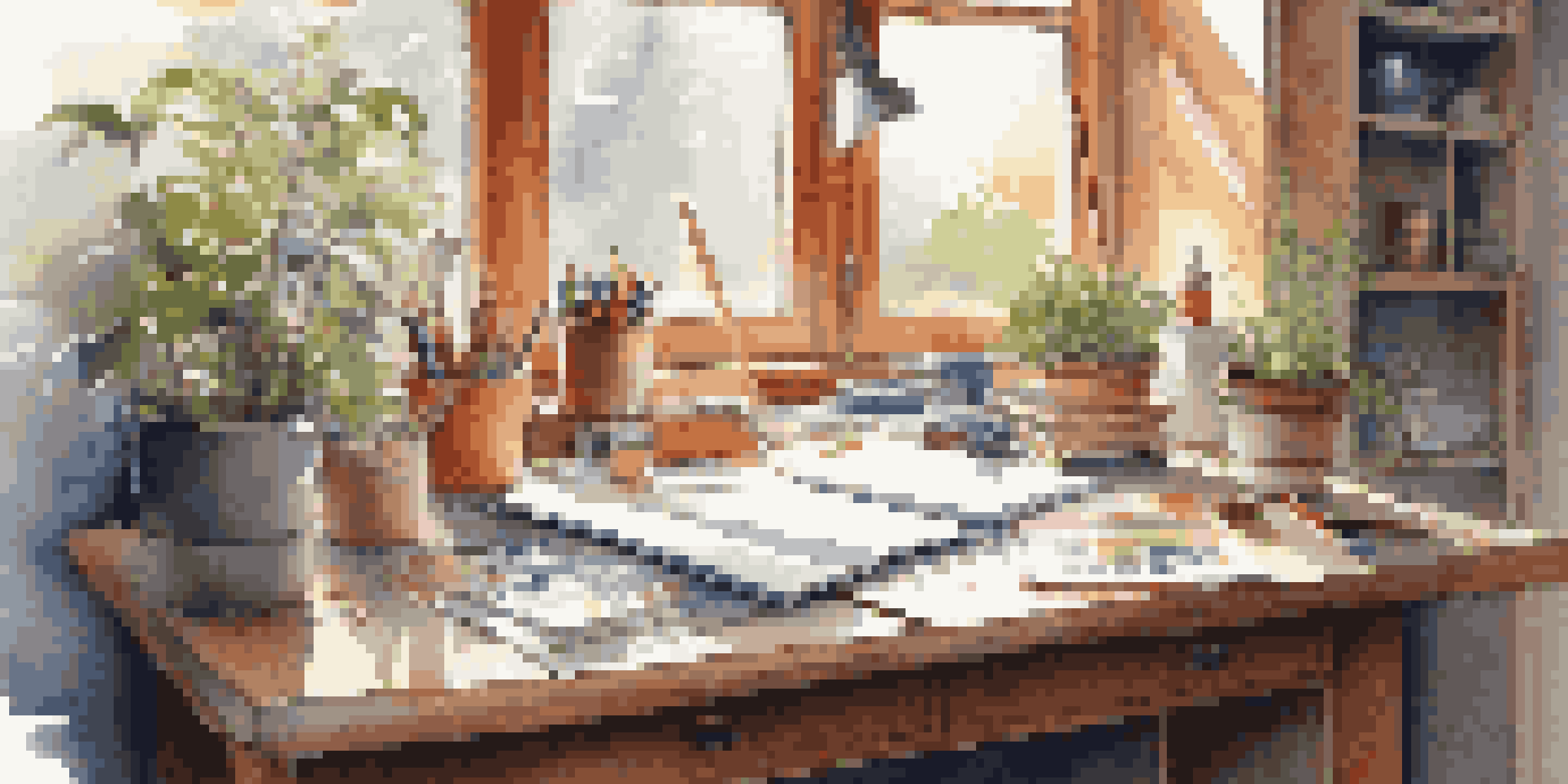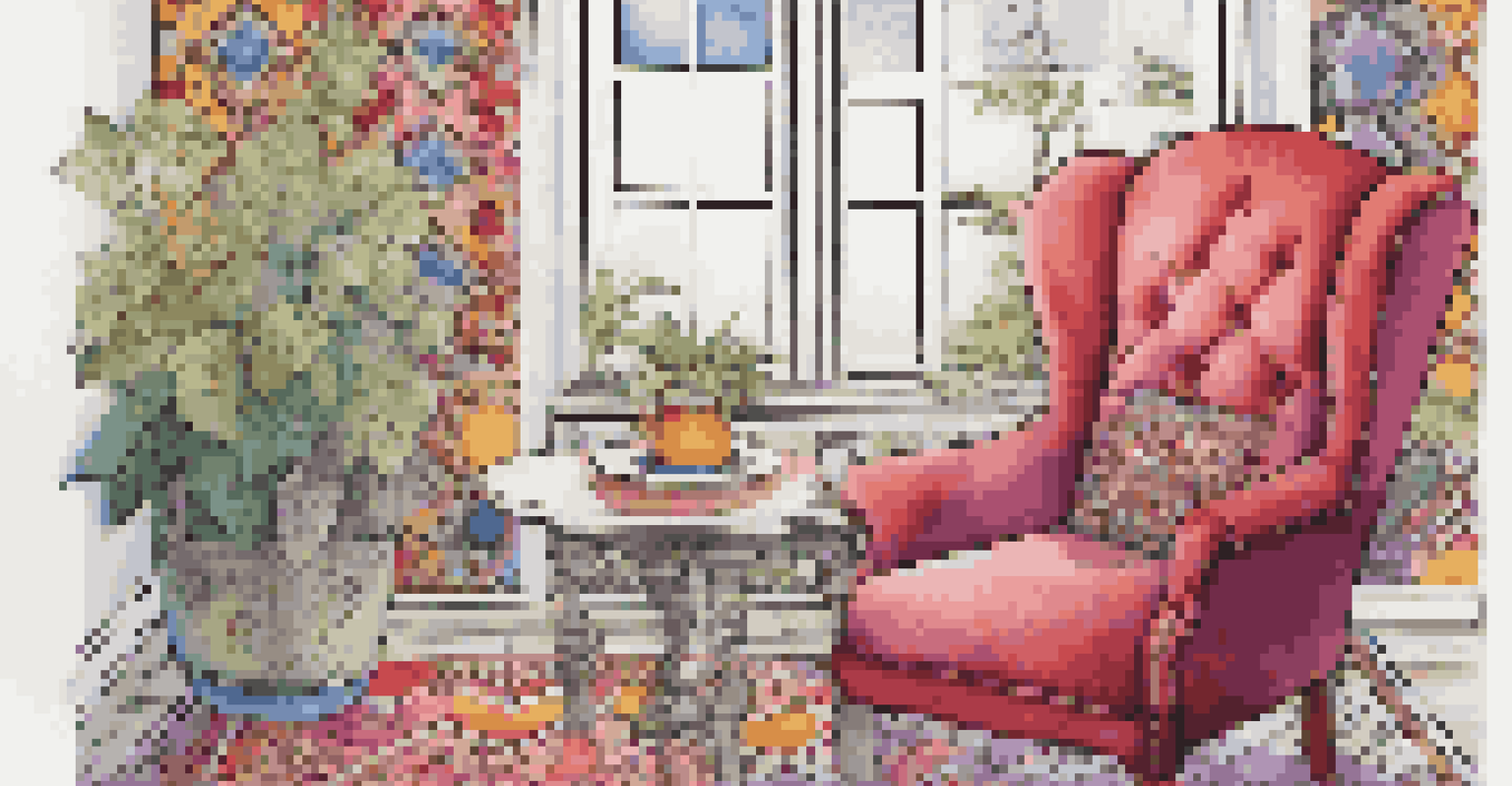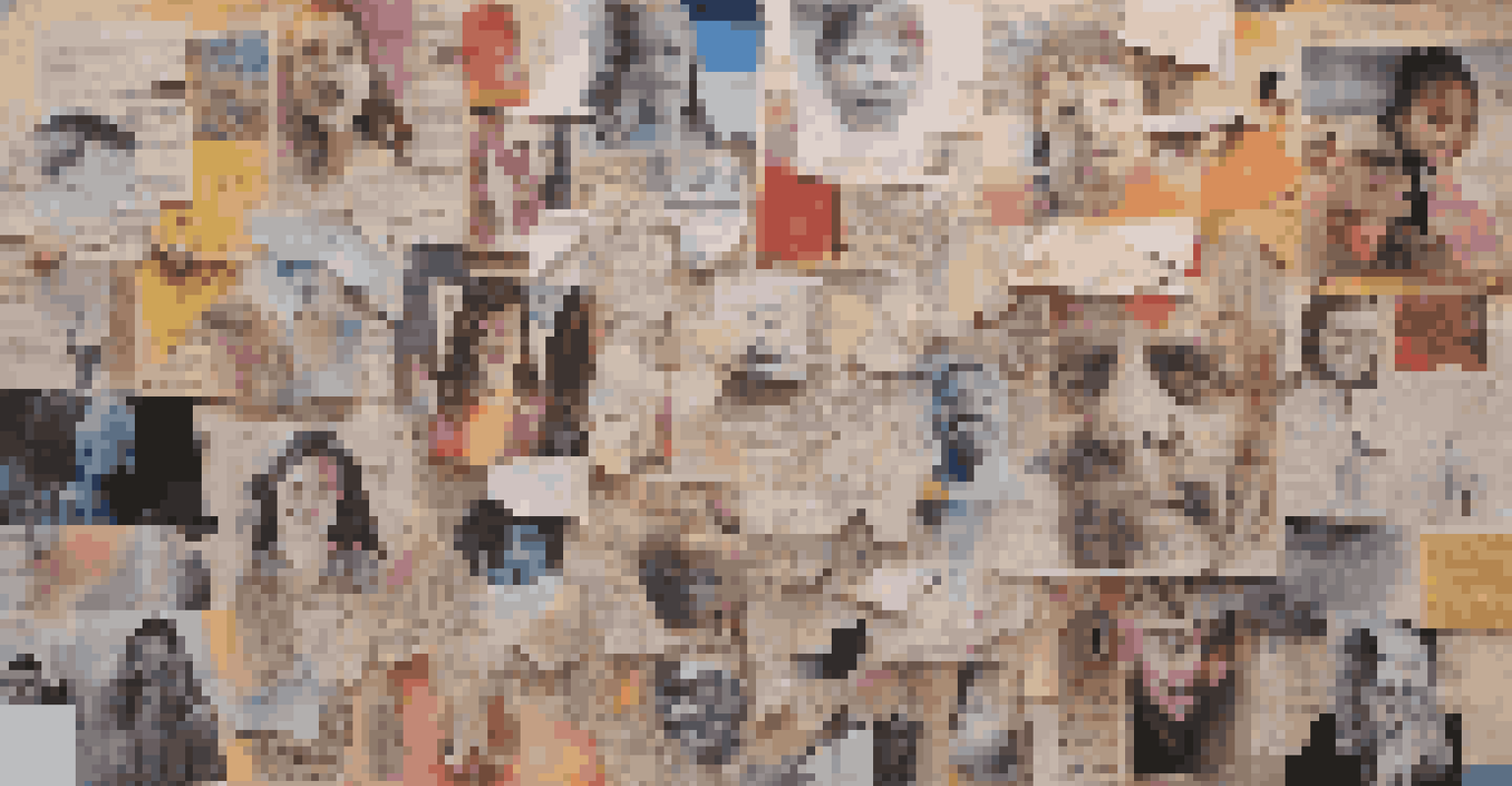Creative Art Therapy Techniques for Anxiety Management

Understanding Anxiety and Its Impact on Daily Life
Anxiety can feel like a heavy cloud hanging over you, affecting your thoughts and daily activities. It’s that nagging worry about future events or persistent feelings of unease that many people experience. This emotional turmoil can lead to physical symptoms, making it hard to focus on even simple tasks.
Art is the most beautiful of all lies.
Understanding the roots of anxiety is essential for managing it effectively. Factors such as genetics, environment, and personal experiences can contribute to heightened feelings of anxiety. When these feelings become overwhelming, seeking creative outlets, such as art therapy, can provide meaningful relief.
Art therapy offers a unique way to express feelings that might be hard to verbalize. Engaging in creative activities allows individuals to explore their emotions in a safe space, bridging the gap between thought and expression. It’s a powerful tool for those looking to navigate their anxiety more effectively.
The Benefits of Art Therapy for Anxiety Management
Art therapy is more than just painting or drawing; it’s a therapeutic approach that fosters self-expression and emotional healing. Engaging in artistic activities can reduce stress and provide a sense of accomplishment, which is especially beneficial for those struggling with anxiety. This form of therapy also encourages mindfulness, helping individuals stay present in the moment.

One significant advantage of art therapy is its accessibility. You don’t need to be a skilled artist to benefit; the process of creating art is what matters most. This makes it a welcoming option for people of all ages and backgrounds, allowing everyone to explore their feelings creatively.
Art Therapy Eases Anxiety Symptoms
Engaging in creative activities like art therapy can provide significant emotional relief and help individuals express complex feelings.
Furthermore, art therapy can facilitate communication. For those who find it challenging to articulate their emotions verbally, creating visual art can serve as a bridge to express complex feelings. This can lead to deeper insights and discussions about anxiety, fostering a sense of connection and understanding.
Drawing and Doodling: Simple Techniques to Try
Drawing and doodling are fantastic ways to channel anxious energy into creativity. These activities require minimal resources—just a piece of paper and a pencil—making them easy to incorporate into your daily routine. As you draw, you may find that your mind becomes clearer, allowing for relaxation and a break from anxious thoughts.
Creativity takes courage.
You might consider setting aside a few minutes each day to doodle freely. Let your hand move without judgment, allowing shapes and lines to flow onto the page. This can serve as a form of meditation, helping to quiet the noise of anxiety and promote a sense of calm.
Additionally, drawing specific images that resonate with your feelings can be even more beneficial. For instance, sketching a scene that evokes peace or happiness can serve as a visual anchor during moments of anxiety. Over time, you can build a collection of drawings that represent different emotions, providing useful insights into your mental state.
Coloring as a Mindful Activity for Anxiety Relief
Coloring has surged in popularity as a therapeutic tool, and for good reason. Engaging in this simple yet enjoyable activity can be incredibly soothing. The repetitive nature of coloring allows your mind to focus on the task at hand, diverting attention from anxious thoughts.
Moreover, choosing colors and patterns can be empowering. You have the freedom to create your own masterpiece, which can foster a sense of control in an otherwise chaotic world. This act of creation can help boost self-esteem and promote a positive mindset.
Doodling and Coloring Calm Minds
Simple activities such as doodling and coloring can serve as effective mindfulness practices, helping to divert attention from anxious thoughts.
To get started, consider using adult coloring books or printable designs available online. These resources offer a variety of intricate patterns to choose from, allowing you to immerse yourself in a colorful world that encourages relaxation and mindfulness, perfect for managing anxiety.
Using Collage to Explore Emotions and Triggers
Collage making is a dynamic way to explore your feelings and identify triggers related to anxiety. By assembling images and words from magazines or other materials, you can create a visual representation of your thoughts and emotions. This tangible form of expression allows for a deeper understanding of what you’re experiencing.
Start by gathering materials that resonate with you—photos, quotes, or anything that sparks your interest. As you piece together your collage, you may discover patterns or themes related to your anxiety. This process can be revealing, enabling you to confront feelings that might have been buried.
Once your collage is complete, take time to reflect on your creation. What emotions does it evoke? How do the images relate to your anxious thoughts? This reflection can foster self-awareness and provide insights that can be invaluable in managing your anxiety moving forward.
Expressive Writing: A Powerful Tool for Anxiety Management
Expressive writing is another artistic outlet that can significantly aid in anxiety management. By putting pen to paper, you can articulate your thoughts and feelings, offering a release that can be incredibly cathartic. This practice can help clarify your emotions and reduce the intensity of anxious thoughts.
Consider setting aside time each day to write freely about your experiences and emotions. Don’t worry about grammar or structure; the goal is to express yourself authentically. This process can help you make sense of what you’re feeling and identify triggers that contribute to your anxiety.
Collage and Writing Foster Self-Exploration
Making collages and expressive writing enable individuals to explore their emotions and triggers, leading to greater self-awareness in managing anxiety.
In addition, journaling can serve as a record of your progress. Over time, you may notice patterns in your writing that provide insights into your anxiety. This reflection can empower you to develop coping strategies and recognize the positive changes you’ve made.
Incorporating Music and Movement into Art Therapy
Music and movement are often overlooked in traditional art therapy, but they can play a vital role in managing anxiety. Listening to music can evoke emotions and memories, providing an outlet for feelings that might be difficult to express otherwise. Pairing this with movement—like dancing—can release pent-up energy and tension.
Try creating a playlist of songs that resonate with your emotions or uplift your spirits. Spend time listening to this music while allowing your body to move freely. This combination can create a powerful release of anxiety, promoting both emotional and physical well-being.

Additionally, consider incorporating rhythm into your art-making process. Whether it’s tapping your feet to a beat while painting or using music as inspiration for your drawings, the connection between sound and movement can enhance your creative experience and help alleviate anxiety.